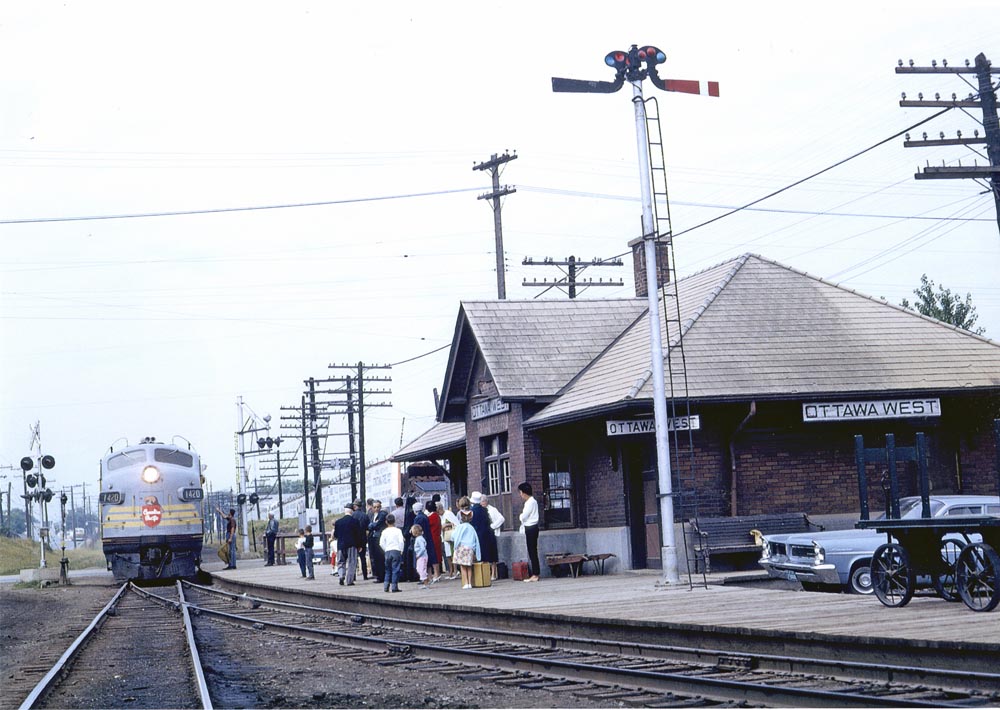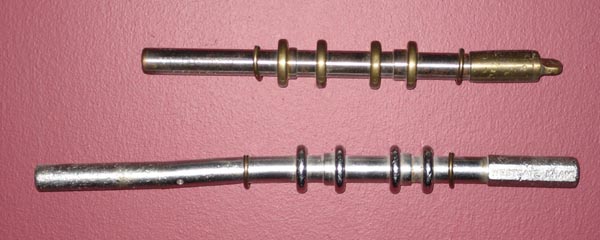 This wonderfully evocative picture was taken by Bill Linley on 31 July 1965. It shows Canadian Pacific train No. 4, “The Dominion” from There is so much of interest in this picture. The train order board is set to tell the engineer to stop to pick up orders (but the yellow flag allowed the engineer to proceed without stopping). The locomotive is painted in the beautiful, distinctive maroon and grey scheme with the interesting Beaver above the Canadian Pacific script lettering. There are several passengers waiting on the platform for train No. 261, the morning Budd car service to Brockville which will connect with Canadian National train No. 5 to Toronto and beyond. Some are going on vacation – they are well-dressed and a couple of the ladies are wearing hats. There are also bystanders who have come to wish the travelers “bon voyage” or just to watch the trains. A baggage cart and a hand cart are available on the wooden platform to help minimize the dwell time here. A 1960 era “The Dominion”, running four hours late this day, did not stop at Ottawa West and many of the The train will take the right hand track on to the Prince of Wales bridge, through This was one of Bruce’s better days. On one occasion the engineer took up the hoop, extracted the orders and threw out the hoop with such vigour that it finished up on top of the locomotive. There was no way Bruce could climb up on the roof so they just left it there. As the train is passing, Bruce will look for the conductor who will be standing in the vestibule of the Skyline dome car. He will hoop up another set of orders as well as the train staff, in a leather pouch, giving authority for the train to occupy the section of line to Hull West. The electric train staff system was used between Ottawa West and Hull West and from Hull West to Ottawa Union. Essentially there was a machine at each end of the line into which were set a number of small steel cylinders (called “train staffs” but known locally as “The Buck Rogers gun”)  Two train
staffs from my collection picked up on my travels – the upper one came
from Just about everything in this picture has disappeared – the train, the station and signals. The line in the distance has been sunk below ground level and is now the OC Transpo Transitway. The nearest railway tracks are used by the O Train at Bayview station. But it is not just the railway that has changed. Our habits have changed. People no longer come down to the station to see the trains. Our leisure habits have also changed and fewer of us now go on vacation by train. I don’t know if this change is good or bad but it is good that people like Bill Linley and Bruce Chapman took the time to record those days. |